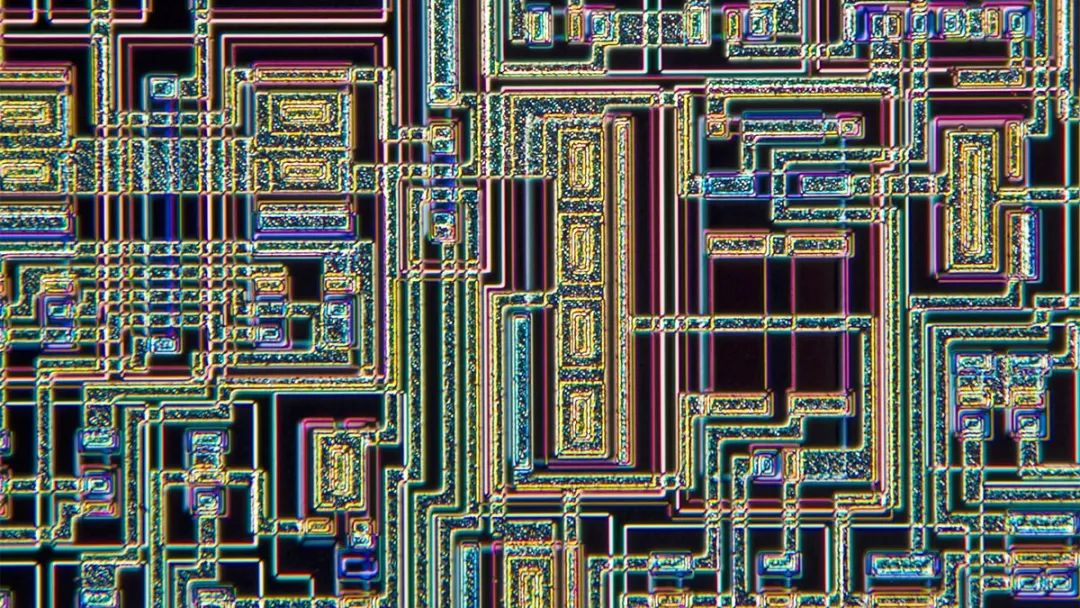
在20世纪90年代,业务流程再造曾风靡一时:企业利用企业资源规划(enterprise resource planning, ERP)系统和互联网等新兴技术,对广泛的端到端业务流程进行彻底的变革。在再造工程的学界及咨询界拥趸的鼓舞下,企业期待着对从订单到现金以及从新产品概念到其商业化等广泛的流程进行变革。
In the 1990s, business process reengineering was all the rage: Companies used budding technologies such as enterprise resource planning (ERP) systems and the internet to enact radical changes to broad, end-to-end business processes. Buoyed by reengineering’s academic and consulting proponents, companies anticipated transformative changes to broad processes like order-to-cash and conception to commercialization of new products.
可是,虽然技术的确带来了重大的升级,但技术的实施通常未能达到超高的预期。比如,SAP或甲骨文(Oracle)之类的大型企业资源规划系统为数据交换提供了有用的IT主干,但也创造了十分僵化的流程,在IT实施后很难改变。自那以后,流程管理通常只涉及对局部流程进行渐进式改变——将精益生产(Lean)和六西格玛(Six Sigma)用于重复性流程,而将敏捷精益创业(Agile Lean Startup)方法用于开发——所有这些都没有得到任何技术的帮助。
But while technology did bring major updates, implementations often failed to live up to the sky-high expectations. For example, large-scale ERP systems like SAP or Oracle provided a useful IT backbone to exchange data, yet also created very rigid processes that were hard to change past the IT implementation. Since then, process management typically involved only incremental change to local processes — Lean and Six Sigma for repetitive processes, and Agile Lean Startup methods for development — all without any assistance from technology.
现在,这种想法的一个版本在一些企业正卷土重来,我们可望在更多的企业中看到它。这不仅需要对人工智能(AI)的欣赏和理解,而且需要重新认识业务流程,将其当作改进工作的架构。随着AI成为一种普遍适用的通用技术,再造工程支持者最初设想的那种业务流程的彻底重新设计似乎越来越有可能实现。
Now, a version of this idea is making a comeback in some companies, and we expect to see it in more. It will require not only an appreciation and understanding of AI, but also a renewed appreciation of business processes as a structure for improving work. As AI emerges as a universally applicable, general-purpose technology, it appears increasingly possible that it can enable the kind of radical redesign of business processes originally envisaged by reengineering’s proponents.
流程再造的提档升级
Updating Reengineering
20世纪90年代实现再造的技术主要是交易型、基于通信的技术。它们在企业内和企业间实现了高效的数据采集和传输。另一方面,AI能够实现更好、更快、更自动化的决策。实质上,大型企业中部署的大多数AI涉及借助大型数据集,学习预测或分类,这反过来又有助于企业做出更好的运营决策。更好的运营决策反过来又会因产生更好的结果而提高效率。一个关键的区别是,目前的AI系统是真正的通用技术,不仅在生产计划和控制方面带来了巨大变化,而且在视觉影像识别与检视、自主操作和新内容生成方面也带来了巨大变化。
The technologies enabling reengineering in the 90s were primarily transactional and communications-based. They enabled efficient data capture and transfer within and across organizations. AI, on the other hand, enables better, faster, and more automated decisions. In essence, most AI deployments in large organizations involve learning from large datasets to make a prediction or classification, which in turn helps business with making a better operational decision. Better operational decisions, in turn, enhance efficiency by producing better outcomes. A key difference is that present AI systems are a true general-purpose technology, and have brought about dramatic changes not just in production planning and control, but also visual image recognition and inspection, autonomous operations, and generating new content.
虽然推动AI发展的方法已存在了数十年,但实施这些方法的成本已急剧下降。基于AI的现代化解决方案以前只属于数据科学家的领域,现在却已经足够成熟,可以“现成”提供,大大降低了入门的技术难度。计算成本的下降——因云技术的广泛使用、低成本带宽的发展和传感器成本的降低所驱动——大大降低了模型驱动预测的价格。基于AI的决策还可以纳入更广泛的自动化背景。机器人流程自动化(robotic process automation, RPA)等技术有助于构建工作流程,实现信息密集型后台流程的自动化。机器人流程自动化建立在规则的基础之上,这限制了它采用基于数据的决策能力。不过,如果与机器学习结合起来,成为“智能流程自动化”,它可以处理的任务类型远比这更多。
While the methods fueling this growth of AI have been around for decades, the cost of implementing them has dropped precipitously. Previously the domain of data scientists only, modern AI-based solutions are now mature enough to be offered “off the shelf,” greatly lowering the technical barriers to entry. Falling computing costs — driven by the wide availability of the cloud, the growth of low-cost bandwidth, and reduced cost of sensors — have drastically lowered the price of model-driven prediction. AI-based decisions can also be included within the wider context of automation. Technologies such as robotic process automation (RPA) help to structure the flow of work and automate information-intensive back-office processes. RPA is rule-based, which limits its ability to employ data-based decisions. But combined with machine learning as “intelligent process automation,” it can deal with much a greater variation of tasks.
AI驱动的这种流程再造已经开始。银行开始利用它为客户提供财富管理建议。保险公司开始使用AI来让客户引导和承保变得更加便捷,并通过对被保险人拍摄的照片进行深度学习分析,自动对车损和住房损坏进行索赔估算。工业企业开始重塑维修和工程流程。即使在AI研究相当丰富但临床采用远远不足的医疗领域,一些国家的诊断和治疗因基于AI的远程医疗而正得到重塑。
This AI-driven reengineering is already taking place. Banks are using it to transform wealth management advice for clients. Insurance companies are using AI to make client onboarding and underwriting much easier, and automating claims estimates for auto and home damage with deep learning analysis of photos taken by the insured. Industrial firms are reshaping maintenance and engineering processes. Even in health care, where there is considerable research on AI but much less clinical adoption, diagnosis and treatment are being reshaped by AI-based telemedicine in some countries.
这一切对我们使用AI的方式、开展工作的方式以及企业的组织方式都会产生重要影响。为了利用这些潜在的好处,企业需要恢复以端到端的流程视角来看待他们的业务,并仔细思考AI如何能够改造这些业务。实质上,企业需要探究他们在哪些方面产生了足够的数据,以便可以提炼出可用于支持运营决策的模式。
All of this has important ramifications for the way we use AI, how work is being performed, and how companies are being organized. To take advantage of these potential benefits, companies need to bring back an end-to-end process perspective on their businesses, and think carefully about how AI can transform them. In essence, companies need to explore where they are generating sufficient data to extract patterns that could be used to support operational decisions.
AI推动流程再造
AI Drives Process Reengineering
随着AI给业务流程带来新的能力,企业需要重新思考所需的任务有哪些,以何种频率,以及由谁来执行这些任务。当AI伴以部分自动化时,企业还需要决定在其流程中人类要从事什么工作,机器要承担什么工作。迄今为止,大多数AI应用都力图改进某项特定的任务。然而,这忽视了大局;聪明的企业现在将AI的引入视为重新审视端到端流程的根本原因。
As AI brings new capabilities to a business process, companies need to rethink what tasks are needed, in what frequency, and who does them. When AI is accompanied by partial automation, companies also need to decide what humans will do and what machines will do in their processes. Most AI applications to date seek to improve a given task. But this is missing the larger picture; smart companies are viewing the introduction of AI as the rationale for a new look at end-to-end processes.
在最基本的层面上,流程分析通常涉及到制约因素与机会的共存。比如,在新加坡的星展银行(DBS Bank),交易监控(反洗钱及诈骗侦测)经理在一次采访中表示,他们对银行监管机构要求的基于规则的系统在识别结果中的高误判率感到失望。这是制约流程的一个不可避免的因素,但他看到了一个机会,即,可以通过机器学习,利用AI来预测每个肯定结果存在的欺诈风险,并对其进行评分。欺诈概率低的交易可以简单放进一个“冷却器”里几个月,看看它们是否在同一个客户身上重复出现。基于机器学习的AI系统用于检测异常值,这在欺诈侦测领域早已有之。可是,当机器学习系统与新的工作流程平台和关系网络分析系统(以识别欺诈网络成员)相结合时,监视分析师的生产率提高了三分之一。
At its most basic level, process analysis often involves a mix of constraints and opportunities. For example, at DBS Bank in Singapore, the manager of transaction surveillance (anti-money laundering and fraud detection) said in an interview they were frustrated at the high false positive levels identified by the rule-based system required by banking regulators. That is an unavoidable constraint on the process, but he saw an opportunity to use AI to predict and score the fraud risk of each positive result using machine learning. Transactions with low fraud probabilities could simply be put in a “cooler” for several months to see if they recurred with the same customer. Machine-learning based AI systems to detect outliers are well-established in the fraud detection arena. But when the machine learning system was combined with a new workflow platform and a relationship network analytics system (to identify fraud network members), the productivity of surveillance analysts increased by a third.
另一个很好的例子在壳牌公司,我们中的一个人(杰文斯)在该公司领导AI计划。长期以来,壳牌一直是一家注重流程的公司,目前正致力于在供应链、运营和维修保养等领域开展一项重大的AI计划。作为其中的一部分,壳牌正在再造其工作流程。
Another good example is at Shell, where one of us (Jeavons) leads AI initiatives. Shell has long been a process-focused company, and is presently engaged in a major AI initiative in areas like supply chain, operations, and maintenance. As part of this, Shell is reengineering its work processes.
比如,我们可以看看能源及化工厂、管道、海上设施以及风力和太阳能发电场的监测和检查工作。这项工作过去完全由检查员和维修技术人员亲自完成,但AI可以缓解这一制约因素。现在,许多低附加值的检查任务可以由机器人和无人机远程完成。壳牌公司的一些设施实在太大,过去需要花费数年时间来手动检查所有的东西——现在他们开始引入无人机和机器人来实现这些流程的自动化,并帮助缩短周期。
For example, consider the work of monitoring and inspection at energy and chemical plants, pipelines, offshore facilities, and wind and solar farms. This work used to be exclusively done in person by inspectors and maintenance technicians, but AI can ease that constraint. Now many low value-adding inspection tasks can instead be done remotely by robots and drones. Some Shell facilities are so large that it would previously have taken years to inspect everything manually — now drones and robots are being introduced to automate these processes and help shorten the cycle time.
由于这些变化,检查员和维修技术人员现在可以重新思考他们的日常工作。他们可以专注于确定项目优先次序等价值更高的活动,或者,如果他们在现场,可以进行更高级的验证。与此同时,新的任务正在出现,比如为图像添加标注,以改进检查算法,或对现在运行于生产中的数千个机器学习模型的训练过程加以管理。以前属于体力工作流程的东西现在由多学科的团队进行管理,这些团队主要从事的是数字任务。
As a result of these changes, inspectors and maintenance technicians can now rethink their day-to-day work. They can focus on higher-value activities such as prioritizing projects or, if they’re on site, performing more advanced verification. At the same time, new tasks are emerging, such as annotation for images to improve inspection algorithms or managing the training processes for the thousands of machine learning models now working in production. What were previously physical work processes are now managed by multidisciplinary teams doing largely digital tasks.
这一转变必然会有一些阻力。起初,说服检查人员的难度很大,可是渐渐地,他们开始被说服,因为他们看到,图像处理在远更短的时间内可以提供相似的准确性。此外,壳牌正让这些工程师重新思考他们与远程监控中心的工作流程,从而让他们有能力推动这一变革。
This shift involved some resistance. At first, it was hard to convince the inspectors, but gradually they are being persuaded as they’re shown that the processing of the images provides similar accuracy in much less time. Furthermore, Shell is engaging these engineers in rethinking their work processes with the remote surveillance centers, empowering them to drive the change.
壳牌逐渐发现,这种由AI支持的再造过程正在成为一种永久性的运作方式。每个单独项目可能只需耗时一两年,但他们越是使用数字、数据和AI来重新设计流程,他们就越能看到进一步发展的机会。这一点尤其重要,因为该公司正在转型成为一家净零排放的能源公司。
Shell is finding that this process of AI-enabled reengineering is becoming a permanent way of operating. Each individual project may take only a year or two, but the more they use digital, data, and AI to redesign processes, the more they see opportunities for going further. This is particularly important as the company is transforming to become a net-zero emissions energy company.
谁应该领导AI支持的流程变革?
Who Should Lead AI-Enabled Process Change?
流程改进传统上完全属于运营经理的领域。正由于此,企业很少制定有明确的再造计划来配合他们的AI项目。为了真正利用AI的力量,流程设计和改进活动应该被纳入AI计划。最成功的AI计划越来越多地由“产品经理”来协调,他们把系统的成功部署(包括所需的业务变化)作为他们的目标。壳牌公司指派了一名产品负责人来管理业务变化,还指派了一名负责技术交付的产品经理。一些企业还致力于“设计思维”活动,这与再造风格分析有部分重叠,即对工作流程和活动需要如何重新设计进行分析,以满足客户需求或内部需求。
Process improvement has traditionally solely been the domain of operations managers. For that reason it has been somewhat rare for organizations to have an explicit reengineering initiative in conjunction with their AI projects. To truly leverage the power of AI, process design and improvement activities should be incorporated within the AI initiative. The most successful such initiatives are increasingly being orchestrated by “product managers” who have the successful deployment of the system, including the needed business changes, as their objective. Shell designates a product owner to manage the business change, and a product manager who is responsible for technical delivery. Some organizations also engage in “design thinking” exercises, which overlap in part with reengineering-style analyses of how workflows and activities need to be redesigned to meet customer or internal needs.
虽然我们已经看到了流程再造与AI开发同步进行的诸多例子,但还没有足够的企业认识到流程改变的必要性。无论这是否被称为“再造”,更明确地表示流程再造的作用和活动——包括高层设计、具体的工序流程、前后成本与周期时间的衡量,以及分析所需的技能和培训——会十分有用。这些活动对AI项目的成功实在太重要,不能心存侥幸。
While we have seen multiple instances in which reengineering takes place alongside AI development, not enough organizations yet recognize the need for process change. A more explicit callout of the reengineering role and activities — including high-level design, detailed process flows, measurement of before and after costs and cycle times, and analysis of needed skills and training — would be helpful, whether it is called “reengineering” or not. The activities are too important to the success of AI projects to leave them to chance or an astute manager who remembers the reengineering movement.
由于以自动化为重点的项目对工序流程有直接的影响,而且相比其他形式的AI,更有可能只会发生渐进的改变,所以它们更可能包括一套正式的流程改进步骤。比如,在Voya Financial公司,流程改进团队内部有一个自动化卓越中心,任何自动化项目都要先经过流程改进工作之后才能进行。该团队的负责人向我们表示,该公司的自动化既是面向流程的努力,又是一项技术活。我们发现,还有好几家公司将流程改进与自动化结合起来,不过,我们还希望看到更激进的流程变革与机器学习等更强大的AI技术相结合。
Because automation-focused projects have a direct impact on process flows and are more likely than other forms of AI to involve only incremental change, they are more likely to include a formal set of process improvement steps. At Voya Financial, for example, the process improvement group has an automation center of excellence within it, and no automation project takes place without a process improvement effort first. The group’s head told us that automation at the company is as much a process-oriented engagement as a technical one. We’ve found several other companies that combine process improvement and automation, but we’d like to see both more aggressive process change and the more powerful AI technologies like machine learning in combination as well.
AI正迅速成为一种无处不在的技术。一旦炒作偃旗息鼓,它会成为与企业资源规划系统、统计包、甚至电子表格一样的正常事物。AI平台可以被为数更多的企业用来再造他们的流程。AI是实现目的的一种手段,本身并非目的。从长远来看,那些了解如何在更广泛的流程再造背景下将其用作一种新工具的企业,按理会从AI中获得最大收益。
AI is fast becoming a ubiquitous technology. Once the hype recedes it will become as standard as ERP systems, statistical packages, or even spreadsheets. AI platforms can be used by a much larger pool of companies to reengineer their processes. AI is a means to an end, not an end in itself. Firms that understand how to use it as a new tool in the broader context of process reengineering will arguably get the most from AI in the long run.
托马斯·达文波特是巴布森学院(Babson College)信息技术及管理学杰出主席教授(President’s Distinguished Professor),麻省理工学院数字经济计划(MIT Initiative on the Digital Economy)访问学者,以及德勤AI业务的高级顾问。
马赛厄斯·霍尔韦格是英国牛津大学萨伊德商学院(Saïd Business School at the University of Oxford)运营管理学美标企业教授(American Standard Companies Professor)。
丹·杰文斯是壳牌公司负责计算科学与数字创新的副总裁。他在扩大壳牌各业务的数字和数据科学技术方面发挥了关键作用。




